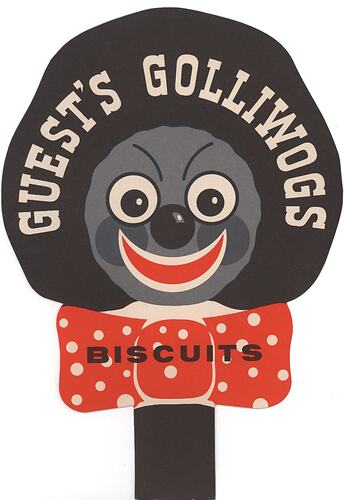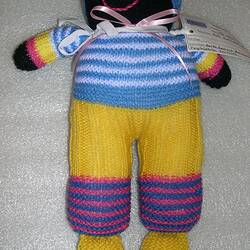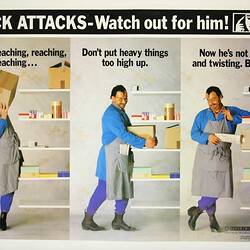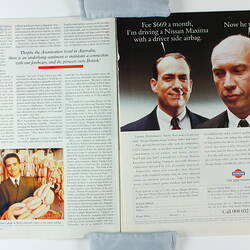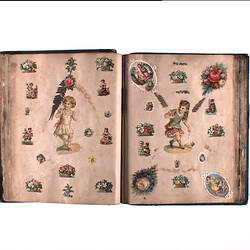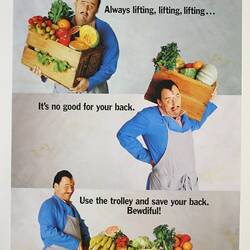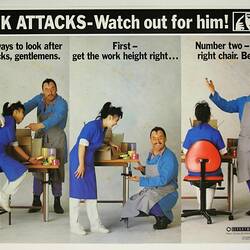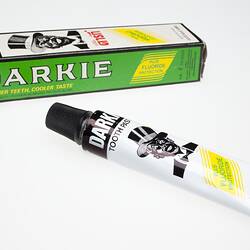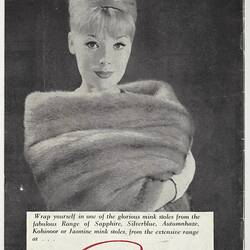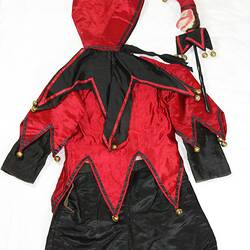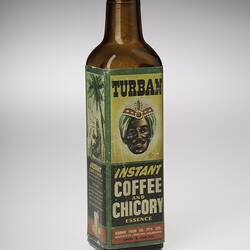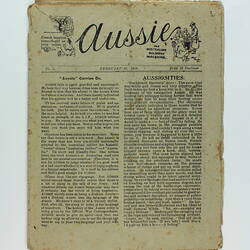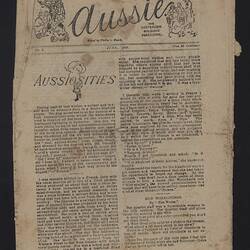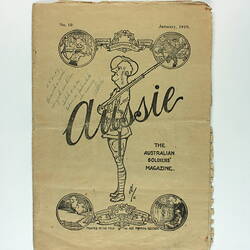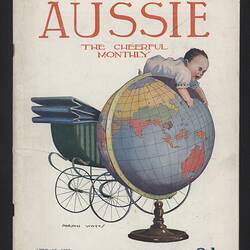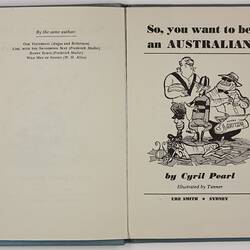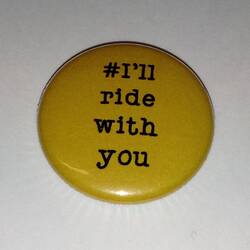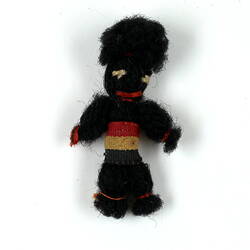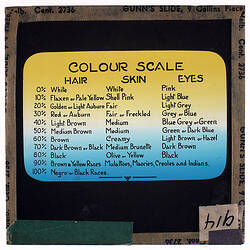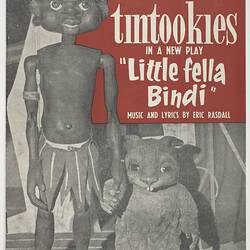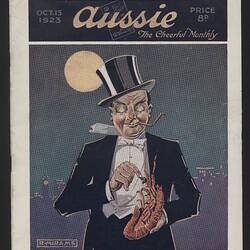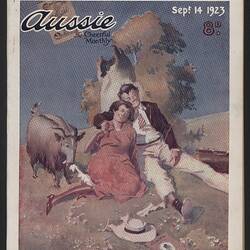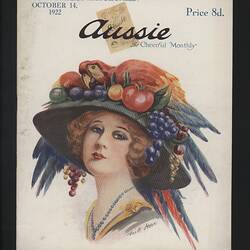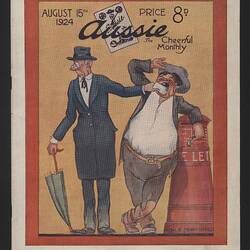Summary
The Museum documents through its collection manifestations of prejudice and racism in popular culture. The Museum aims to improve the interpreting and re-interpreting of the collections through this de-colonising lens of power and disempowerment through diverse voices and perspectives; and explicitly recognise the offence, hurt and trauma these images have and continue to cause.
Introduction:
The Museum collects, publishes and interprets the Australian material culture of cultural stereotyping to both record cultural representations of diverse peoples over time, and through demonstrating examples of how prejudice has been manifested in the past and present, advocate against racism.
There are words and images associated with the artefacts in the collection which are offensive, frequently shocking and may cause trauma for people whose identities are directly impacted.
The targets of these portrayals have been primarily First Peoples and particular migrant groups, although in some instances the caricatures have been imported from other countries, such as America and the United Kingdom. They may also depict gender and sexuality-based stereotypes. Advertising, product branding and labelling creates images, taglines, and associations which are by their nature memorable and consequently persist in the popular visual and oral language.
Uses of Stereotyping in Marketing & Advertising:
The use of cultural (and other) stereotypes in this context attempts to elicit amusement, feelings of superiority, and nostalgia for the empowered, white majority through the reduction of cultural identities and historical references to one dimensional caricatures of diverse groups of people. Stereotypes are also prevalent in the quest to sell a product, again by depicting simplistic cultural derivations, as well as explicitly derogatory and racist. Then as now such depictions of often marginalised people and the attitudes these depictions represent, are deplorable and unacceptable.
Packaging for domestic cleaning items in the Museum's collection, such as the soap pads box and floor polish tin, feed off the connotations of slavery, unpaid or cheap labour and the stereotype of the 'lazy' African American or First Peoples in Australia. The overtly racist brand name 'N***** Boy' (also a product name for Australian licorice products from the 1950s and 1960s) is accompanied by the tag line 'It works so hard you work less!' This phrase, when coupled with the image or brand name, encourages consumers to make prejudicial connections between First Peoples in Australia and African Americans, and menial labour. Similarly the offensively named 'Piccaninny' brand, which specialised in home maintenance products, promotes its product with 'Twice the Shine in Half the Time!'; a complete whitewash of the history of the Stolen Generations and forced, unpaid, menial domestic labour and slavery.
Marketing strategies are also utilised to give 'authenticity' and even a touch of the romanticised 'exotic' to products coming from or representing another country or culture. For example, the 'coffee and chicory' branded items in the Museum's collection feature turban-wearing, camel-riding male figures and one product is even entitled 'Turban Brand'. Thus certain cultures are frequently incorrectly portrayed as being less educated and with exaggerated features; these cartoon-like representations and caricatures were sometimes used as comedy, and many deeply offensive illustrations can be found in the large selection of the Museum's 'Aussie' magazine collection (a periodic publication for Australian World War I servicemen which ran until circa 1929).
Such depictions can even be viewed as an effective mechanism for justifying discriminatory and racist practices. Australian and American 'Picaninny' and 'Minstrel' shows, featuring fancy dress and makeup, present caricatures which validated the marginalisation of those being stereotyped. These caricatures implicitly promoted a cultural hierarchy, thus trivialising the mistreatment of the groups who were targeted. In addition to this, it has even been argued that an increase in stereotyping in advertisements and branding in the USA and Australia may partly have been in response to the increasing visibility and activism of many cultural groups, including First Peoples in Australia. The persistence of black and white minstrel shows and 'blackfacing' in theatre and television productions (even until quite recently) are an example of the persistent normalising of white superiority; also due to the role of mass advertising in perpetuating racial and cultural stereotypes.
Cultural Appropriation:
In parallel to this creating and perpetuating of cultural stereotypes, particularly in relation to First Peoples in Australia, the 1950s onwards saw a rapid increase in the use and appropriation of traditional First Peoples symbols and motifs, in everything from souvenirs to artworks and textile design. Examples of this new design and the assumption of a particular visual Australian identity can be seen in the Museum's collection through such objects as the 1950s Guy Boyd studio vase. Consumption appears to have no boundaries in its pursuit of the market, whether through the belittling and racist attacks of select cultural groups, or the appropriation of cultural knowledge and design.
Historical Example of Anti-Racist Objects:
There are also examples of those who rejected expressions of racial inequality and the use of cultural stereotypes in material culture. In late nineteenth century Melbourne, E. W. Cole was a great advocate of respect for others regardless of race, class, and ethnicity; he sold souvenirs including plates and medals in his book store, and some of these items are also held in the Museum Victoria collections.
Conclusion:
The Museum documents through its collection manifestations of prejudice and racism in popular culture. The Museum aims to improve the interpreting and re-interpreting of the collections through this de-colonising lens of power and disempowerment through diverse voices and perspectives; and explicitly recognise the offence, hurt and trauma these images have and continue to cause.
Selected References:
Haffenreffer exhibit: 'Thawing the Frozen Indian', Brown University (refer to museum website, 2013); Davil Pilgrim, curator of Jim Crow Museum of Racist Memorabilia (refer to museum website, 2013); Patricia Turner, Ceramic Uncles and Celluloid Mammies: Black Images and Their Influence on Culture (New York, 1994)
More Information
-
Keywords
-
Authors
Dr Moya McFadzean, Ms Kimberley Moulton, Ms Eleanor Warmington
-
Article types
